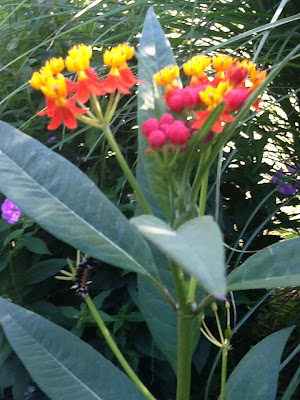More than 600 people turned out on Saturday, July 27th to attend the
2013 Summer Garden Experience at the Penn State South East Ag and Extension Research Center in Lancaster County.
Lifelong Lancaster County resident and noted naturalist, Jack Hubley, was the Keynote Speaker.
Touring the acres of annual flower trials that test new varieties under Pennsylvania growing conditions, offerred participants an opportunity to note what new annual flowers will be available from greenhouses and nurseries next Spring.
The Pollinator Friendly Demonstration Garden attracted adult pollinators ...
...and their larvae.
Wagon trips escorted visitors to the corn and grain fields, where new varieties of grain and farming practices are being researched under field conditions.
A workshop on proper pruning of trees took place.
Master Gardeners maintained an information booth and display area.
And people were introduced to new gardening ideas from the Ideas Garden, maintained by the Lancaster County Master Gardeners.
For a fee to cover materials, folks could learn how to build and take home a blue bird nesting box, and learn how to encourage these birds to make their home on your property.
And the Franklin County Master Gardener contingent, ably assisted by Fulton County Master Gardeners conducted a tomato tasting of a plum/paste variety trial. 118 people filled out score sheets of 24 unnamed tomato varieties (labeled A - W). This data is added to the yield, growing uniformity, and marketability data gathered for commercial growers providing tomatoes to the fresh market.
 |
| Click on the Picture for a Bigger Version |
And the winner is, appropriately, an old fashioned heirloom from Pennsylvania Dutch Country, Amish Paste!
The event was covered by the Lancaster Newspaper
here.
Mark your calendars! The 2014 Summer Garden Experience will take place on Saturday, July 26th, 2014. Don't miss it. And if you missed SGE this year, come to next week's
Ag Progress Days in State College, and experience all that
Penn State Extension has to offer that both directly and indirectly benefit the citizens of Pennsylvania.




















































